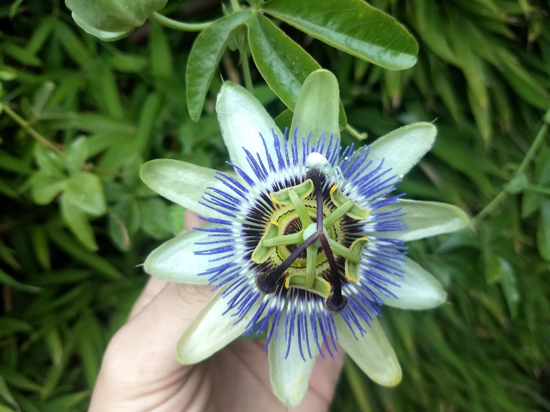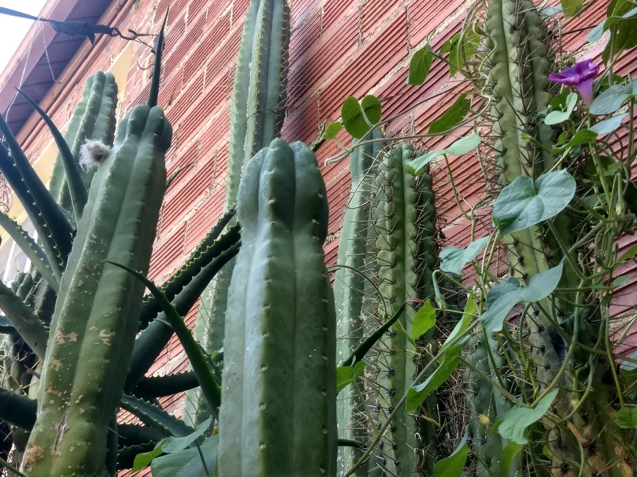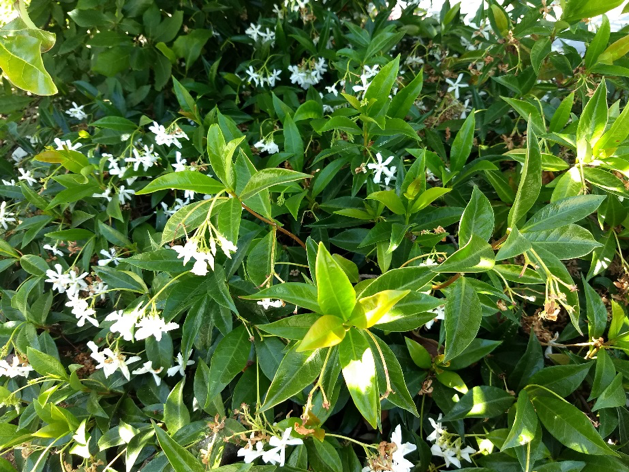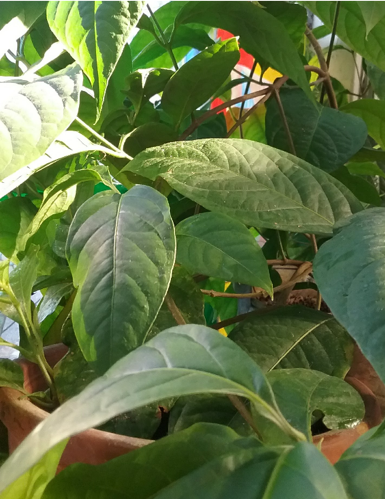- Ethical and Sustainable Access to Entheogenic Plants - July 23, 2019
What are ethical, sustainable relationships to entheogenic plants? How can humankind grow access to sacred plant-based healing and insight without risking or profaning the plants and their traditions? Are there alternatives to vulnerable entheogenic plants? Who should have access to harvest, grow, and know these plants? I try to explore some of these questions here, based on over 30 years of experience as a gardener, sacred plant practitioner and facilitator, community leader, and life science informatics researcher.
Growing Opportunities
For ethical access to entheogenic materials, in this article, I will recommend growing or wild-harvesting on permitted property at scales suitable for personal or small group work.
The human right to work with traditional sacred and newly discovered entheogenic plants is seeing increased public attention and policy progress. As demand grows, sustainable and ethical sourcing of entheogenic material is increasingly important.1 For ethical access to entheogenic materials, in this article, I will recommend growing or wild-harvesting on permitted property at scales suitable for personal or small group work. I’ll also review other options for ethically and sustainably accessing entheogenic plants.
Growing Your Own
You can grow sacred plants, fungi and related materials indoors or in greenhouses around the world. For example, the plants below can be grown outdoors in temperate coastal California.
List 1. Example entheogenic plants that can be sustainably grown
- Psychotria sp. – (“Chacruna” – P. alba can grow outdoors in zone 10, others may require greenhouse – n,n-dmt)
- Mimosa tenuiflora – (“Tepescohuite” – n,n-dmt, fast grower, temperate)
- Acacia sp. – (e.g., “Huisache” – A. farnesiana, decorative species in S. California – n,n-dmt)
- Phalaris aquatica and P. arundinacea – (“Grass” – invasive species – n,n-dmt, 5-meo-dmt)
- Delosperma cooperi – (“Ice plant” – decorative species – n,n-dmt, 5-meo-dmt)
- Psilocybe allenii, P. cyanescens outdoors, P. cubensis indoors – (“Ninos Santos” – all can be grown locally – 4-ho-dmt, 4-po-dmt, baeocystin, norbaeocystin)
- Banisteriopsis sp. – (“Yage,” “Ayahuasca” – most require greenhouse, some hardy sp. have recently been demonstrated to grow outdoors year round in zone 10 – monoamine oxidase inhibitors/MAOIs)
- Peganum harmala – (“Syrian Rue” – useful seeds available online – MAOIs)
- Passiflora sp. – (“Passionflower” – decorative species, P. incarnata, P. edulis, widely variable potency – MAOIs)
- Ipomoea sp. – (“Morning Glory” – I. violacea variety is preferred – LSAs)
- Trichocereus / Echinopsis sp. (“Huachuma,” “San Pedro” – grows well. Avoid using peyote, which is vulnerable – mescaline)
- Trachelospermum jasminoides (“Star Jasmine” – decorative species across California – ibogamine voacangine, possible ibogaine)
- Tabernaemontana sp. (“Sananho” – different decorative species – ibogamine, voacangine, ibogaine and related alkaloids)
Entheogenic plants listed above can be grown outdoors (zone 10 and higher) and in greenhouses or indoors (zone 9 or lower). Because nature is diverse, each plant is likely to vary in potency and effect. It is useful to get to know them carefully.

Chacruna is a traditionally recognized sacred plant; it is the source for the psychoactive compound n,n-dmt (N,N-Dimethyltryptamine). Members of the Psychotria genus can be grown indoors or outdoors in temperate areas.
A garden that hosts the plants above, even on a single inhabited urban lot, can support plant-assisted meditation several times per year for a small group. If outdoor or greenhouse space is limited, Psilocybe cubensis can be grown indoors in quantities to support individual or community practice.
Wild Harvesting
Many entheogenic plants grow naturally outdoors with no human assistance. Most are called “analogs,” which are less traditionally known but share psychoactive characteristics; e.g., they contain phenethylamines, tryptamines, or other indole alkaloids. Local sources for wild harvest include indigenous, naturalized, and invasive species.2
List 2. Harvesting Wild, Naturalized and Invasive Species
- Phalaris aquatica and P. arundinacea – (n,n-dmt, 5-meo-dmt)
- Delosperma cooperi – (5-meo-dmt and n,n-dmt)
- Passiflora sp. – (P. incarnata and P. edulis are preferred sp. – MAOIs)
- Ipomoea sp. – (Morning Glories – LSAs)
- Trichocereus / Echinopsis sp. – (San Pedro and related – mescaline)
- Trachelospermum jasminoides – (Star Jasmine – ibogaine, tabernaemontane, voacangine)
- Tabernaemontana sp. (decorative species – ibogamine voacangine, possible ibogaine)
The list above references plants found outdoors in the San Francisco Bay area that are not vulnerable. Please do NOT harvest violate park or public land policies or trespass on private properties to harvest these plants.

Different varieties of passiflora contain MAOIs (as harmala alkaloids) suitable for adding to n,n-dmt plant sources to create combinations with psychoactivity similar to ayahuasca. For example, passionflower combined with some species of phalaris grass, extracted with care, provides an example of an ayahuasca analog.
Ordering Online
As a less preferred option, entheogenic plants and materials may be ordered for delivery. These are more difficult to confirm as sustainable, but there are options.
As a less preferred option, entheogenic plants and materials may be ordered for delivery. These are more difficult to confirm as sustainable, but there are options. For example, Tepescohuite (Mimosa tenuiflora) root bark and Syrian Rue (Peganum harmala) seeds can usefully replace traditional Psychotria sp. and Banisteriopsis caapi, to create an ayahuasca analog. Synthetic versions of natural compounds, where safe and legal, can also be useful for sustainable practice. As an example, work with synthetic 5-meo-dmt is less perturbing to Bufo alvarius toads (as a natural source of 5-meo-dmt), although possibly subject to laboratory and trade regulations.
List 3. Plants and Materials You Can Order From Sustainable Sources
- Mimosa tenuiflora (n,n-dmt – research source for sustainability, best when grown locally)
- Acacia sp. (e.g., confusa, obtusifolia, farnesiana – n,n-dmt – research source for sustainability, best when grown locally)
- Delosperma cooperi – (5-meo-dmt and n,n-dmt)
- Peganum harmala – (MAOIs)
- Passiflora incarnata – (MAOIs)
- Ipomoea sp. – (Ipomoea tricolor is preferred for LSAs – seeds)
- Trichocereus / Echinopsis var cacti (mescaline – research source for sustainability, best when grown locally)
- Brugmansia / Brunfelsia sp. (tropanes)
- Trachelospermum jasminoides (ibogaine, tabernaemontane, voacangine – also see Tabernaemontana sp.)
- Salvia divinorum – (salvinorin A; grows outdoors in Bay Area, not freeze hardy)
- Amanita muscaria – (muscimole)
- Synthetic – 5-meo-dmt; other synthetic tryptamines and phenethylamines (e.g., MDMA, MDA, other 5-substituted tryptamines, in areas where this is decriminalized or legal)
- Synthetic – Ketamine – under prescription
The list above contains entheogenic plants that can be ordered online. There are ethics and sustainability risks with unknown vendors.

Different varieties of cacti within the Trichocereus genus have been recognized as traditionally sacred for years, and contain mescaline. Compared to peyote, these are faster growing and legal to grow in many US States and worldwide.
Respect for Uniquely Sacred, Vulnerable or Endangered Plants
Overharvesting can be a problem with unknown online sources.
It is tempting to order materials with little knowledge of where a plant comes from. It’s easy to order these plants, bark, and leaves off the internet. Overharvesting can be a problem with unknown online sources. Ethical and sustainability concerns have been noted with peyote (Lophophora williamsii, L. diffusa and related sp.), Bufo (Bufo alvarius), and other living, feeling, or rare natural sources. Ordering from sources off the internet, depending on specific sources, is the most common and possibly least sustainable sourcing practice. Generally, I recommend you avoid ordering entheogenic materials online unless you know the material is sustainably harvested and permitted to share.
List 4: Avoid Ordering Online
- Lophophora sp. (Peyote) – (Southern US and Mexico – overharvested, vulnerable)
- Psychotria sp. – (Central or S. America – risk of overharvesting, not confirmed)
- Tabernanthe iboga – (Central Africa through Gabon)
- Phyllomedusa bicolor – (“kambô”- South America – cruelty risk/wild impacts unknown)
- Bufo alvarius – (Southern US and Mexico – cruelty risk/wild impacts unknown)
- Diploterys cabrerana – (Central or S. America – possible risk of overharvesting in locations)
- Banisteriopsis sp. – (Central or S. America – possible risk of overharvesting in locations)
Listed above are species of concern that may merit protection.
Online orders are less likely to be sustainable, unless the goal is to conserve live plants under the goal of conservation.

In this example, carefully extracted, Star Jasmine can provide a fast-growing resource for iboga alkaloids,3 Glossy-leaved, flowering plants from Trachelospermum and Tabernaemontana and Voacanga plant genera have been found to contain ibogaine and other alkaloids, including voacangine and ibogamine. These can provide ethical and sustainable alternatives to Tabernanthe iboga.
Species of High Concern
Finally, some species are of highest concern. These may be tied to specific traditions and geographic locations, such as peyote, which is sacred to the Native American Church and the Huichol people, and has been recognized as vulnerable in some areas.4 It is recommended to avoid wild-harvesting the plants listed below, unless permitted by traditions and individuals caring for these plants.
List 5: If Non-Indigenous, Unless Permitted, Please DO NOT Wild-Harvest
- Lophophora sp. (Peyote) – (Southern US and Mexico – overharvested)
- Psychotria sp. – (Central or South America – risk of overharvesting some varieties in specific locations)
- Diploterys cabrerana – (Central or S. America – risk of overharvesting in specific locations)
- Banisteriopsis sp. – (Central or S. America – risk of overharvesting in specific locations)
- Tabernanthe iboga – (Central Africa through Gabon)
- Phyllomedusa bicolor – (“kambô,” S. America – cruelty risk/wild impact unknown)
- Bufo alvarius – (Southern US and Mexico – cruelty risk/wild impacts unknown)
Please do not wild harvest these plants unless you are a member of any group with a traditional relationship to these plants, or if you are associated with a permitting traditional group in a relevant way (e.g., indigenous, mestizo or invited practitioner) where harvesting is permitted by the plants’ stewards and aligned with any associated conservation efforts.
Above, are species of concern that may merit protection. Please do not wild harvest these plants unless you are a member of any group with a traditional relationship to these plants, or if you are associated with a permitting traditional group in a relevant way (e.g., indigenous, mestizo or invited practitioner) where harvesting is permitted by the plants’ stewards and aligned with any associated conservation efforts. This is a particularly sensitive, important, and active conversation that is evolving as risks and opportunities for access, ethics, and sustainability emerge.

For example, peyote is considered to be at risk in some areas and is uniquely sacred to some Native American tribes and churches. Unless transparently aligned with a permitted Native American group, wild-harvesting peyote is illegal, unethical, and absolutely to be avoided.
Some sacred plants like Banisteriopsis caapi are potentially at risk of overharvesting in areas. Many are legal to grow but not to extract, unless as a religious practice. Most of these plants are associated with specific traditions. For example, peyote is considered to be at risk in some areas and is uniquely sacred to some Native American tribes and churches. Unless transparently aligned with a permitted Native American group, wild-harvesting peyote is illegal, unethical, and absolutely to be avoided.
Conclusions and Next Steps
This article attempts to provide initial direction around several important questions, focusing primarily on the plants themselves. As interest and access to sacred plants grows, it is increasingly important to treat these plants and their sources and traditions with careful respect. There are different opinions regarding what “ethical and sustainable access to sacred plants for healing and insight” means. It is time to open up this conversation with respect and care for these beautiful sacred plants.
I have explored some of these questions in this article, based on my own experiences, readings, and interactions with Western experts and academia, as well multiple views from traditional and urban communities of practice. This article is offered, first, out of respect and care to the plants, as well as to the many and varied traditions that are associated with these plants, and to all individuals seeking healing and insight. With an intention to share and learn from open and respectful communication, I hope this article will stimulate careful thought, useful discussion, and ethical and sustainable sacred plant practices.
Art by Karina Alvarez.
Disclaimer:
Please note that this is a narrow selection of plants identified for practical purposes and discussion. These views are based on personal experience in this field, as well as consultation with other sources and do not make claims of final scientific authority. This piece is offered as a first approach to raise awareness around these issues and to help facilitate the conversation. The author is happy to receive feedback and answer requests: [email protected].
References
- Levin, S, T. (2019, June 5). “These are healing plants”: Oakland decriminalizes magic mushrooms. The Guardian Weekly. Retrieved from https://www.theguardian.com/us-news/2019/jun/05/oakland-magic-mushrooms-decriminalize ↩
- Ott, J. (1993). Pharmacotheon: Entheogenic drugs, their plant sources and history. Kennewick, WA: Natural Products Co. ↩
- Bös, B. (2015). Sternjasmin (Trachelospermum jasminoides). Giftpflanzen Compendium. Siegen, Deutschland: Giftpflanzen.com.. Retrieved from http://www.giftpflanzen.com/trachelospermum_jasminoides.html ↩
- Schaefer, S, B. (2017). Peyote: Plant medicine for the body, mind and soul. Chacruna.net. Retrieved from https://chacruna.net/peyote-plant-medicine-body-mind-soul/ ↩
Take a minute to browse our stock:
Did you enjoy reading this article?
Please support Chacruna's work by donating to us. We are an independent organization and we offer free education and advocacy for psychedelic plant medicines. We are a team of dedicated volunteers!
Can you help Chacruna advance cultural understanding around these substances?













